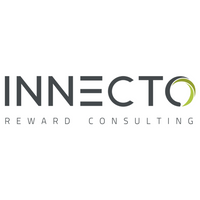How to get the fundamentals of workplace culture right
With the Bank of England predicting a broadly flat line for GDP in 2024, business conditions are set to remain tough.
The good news is that inflation is down. The cost-of-living squeeze is becoming a little more bearable as shoots of pay growth start to sprout. The truth is, however, that by the end of 2024 most workers will have less purchasing power than they did in 2006, as real wages will fall behind expenses.
For many companies, salary budgets will continue to be squeezed as they seek to balance talent retention, worker protection and cost management. So the pressure remains, and there is one thing that can help keep the cap on the pressure valve better than most – strong culture.
Whether operating an elite sports team, a corporate giant or a regional manufacturing SME, the fundamentals of workplace culture are built on mutual trust. When leaders and managers demonstrate trust in workers, employees feel more empowered, happier in their roles and more productive. When we trust our leaders and believe what they tell us, it becomes easier to buy into a workplace culture.
Pay transparency
While building a culture that works for everyone is far-reaching, much of it comes back to pay, and how it is managed. It’s well known that pay secrecy enables disparity. While some countries like Sweden and Norway have for years made salaries public, the rest of the world is only now contemplating the same kind of transparency.
In the UK, the Equality Act started a cycle of change in 2010 and in 2017 Gender Pay Gap regulations came into force aiming to further address gender pay disparity. Meanwhile, the EU Pay Transparency directive has brought in better information-sharing about roles and ranges and in the US, some states have adopted legislation encouraging greater openness, particularly during recruitment.
This general global trend, and the advent of pay-sharing platforms, has forced many companies to look at this more seriously.
Another factor driving greater urgency and affecting all businesses is the younger generation. LinkedIn market research has found that 34% of workers aged 25 and under would be happy to share details of their pay, compared with just 4% of workers in their late 50s. That is a significant difference in mindset.
A study by Visier found that 68% of employees would switch employers for greater transparency, even if pay was the same.
Embracing a transparent mindset
To build and retain a strong culture - one that helps companies attract and retain the best talent - business leaders need to listen to these younger workers. They will find that the priority isn’t to know other people’s pay, but to have clarity and transparency about how pay decisions are being made and communicated.
For many younger workers, fairness starts with a company being willing to engage in these subjects with openness and frankness.
So as businesses, how do we know the level of transparency that is best for us? This is the burning, and sometimes uncomfortable, question we are helping a lot of clients with. And it spurns further challenges: How far do we want to go with pay transparency? What does it mean to us? How ready are we to begin the process?
Four-Step Journey
With most of these clients we work through a four-step journey:
1. Uncovering the risk
Most concerns around transparency stem from not knowing or understanding the scale of risk we are exposed to. This means analysing data; scrutinising job descriptions and methods for internal comparison; and benchmarking against the market. Only by doing this is it possible to understand our strengths and our weaknesses.
2. Taking control
Once we understand our risk factors, we can take control and redress any imbalances that inevitably happen over time, if left unchecked. This is about reinforcing policies and frameworks so we can explain and justify them when needed: How are we using pay ranges? How do we manage pay progression?
3. Building confidence
One of the biggest challenges in following through with pay transparency is managerial black spots. Seen by workers as the guardians of the decision-making process, managers all too often either don't understand pay policies or lack the skills and training to hold these conversations with any confidence. This can cause more confusion, undermine the process and tug away your culture. So the right level of training and support needs to be provided.
4. Sharing the story
Illustrate and visualise to communicate. Business tools like PayLab can help managers by giving clarity to them and the employee. It can quickly make tricky calculations and display the results in the context of the market, performance, gender or ethnicity. With easy-to-read dashboards, a tool like PayLab enables understanding and communication around pay: how it works, what is realistic in terms of pay progression and how decisions are being reached.
Even if you are still some way from true pay transparency, these four steps demonstrate to your employees that you are taking it seriously, which can transform satisfaction and help embed your culture.
Redefining career
The same principles apply to career. It is not always obvious to workers how to plot their progression through a company if there is no hierarchical pathway.
Be open to new ways of personal and professional development, giving fresh opportunities for people to grow. More than ever with the advance of technology, we need to think strategically about the types of skills our workforce needs now and will need in the future, and plan to bridge those gaps.
This may mean incorporating more emphasis on skills and capabilities, and prioritising skills-based hiring ahead of non-vocational degrees and credentials, or a more granular focus on skills learned in previous jobs.
For bolder companies with a younger workforce this may even lead to a redefinition of ‘career’, adapting our HR processes to tailor to the individual and gear towards how people Netflix and Amazon their way through life. With this new kind of creative thinking, we will open ourselves up to a broader talent marketplace, especially the younger generation.
Big data and workforce segmentation
Much of the groundwork here is in being prepared for change and shifting mindsets.
Central to moving forward is a more comprehensive data set and – further ahead – employing artificial intelligence (AI). AI has the potential to significantly disrupt the way we work. It will fundamentally change daily operations and enable more engaging and customised experiences for employees across recruitment, induction, training, and personal and professional development.
The secret to humanising the workplace and individualising reward lies in a more sophisticated approach to segmentation. Currently we use surveys, performance reviews, onboarding sessions and exit interviews to compile data. We can use received wisdom to model by age, career stage, marital or familial status, income, aspiration or a combination of these factors.
But how can we go further? We need to ask better, more contextualised questions with a view to improving retention. In the same way that retailers collect information to tailor and curate the consumer experience, we can be smarter and use the data we have at our fingertips.
Benefits 2.0
Whether we are purchasing a company cash plan for health cover, offering an insurance product, creating salary sacrifice schemes promoting healthier choices or directing workers to the support offered by an EAP, knowing our workers will drive us to make better choices on their behalf.
Once distinct groups of employees have been established, we can shape our benefits around them and curate the offering to maximise engagement. By building even more granular personality profiles – perhaps by using AI – it should be possible to go beyond age or gender and account for different lifestyles and value sets even within the same cohort. Any danger of pigeonholing people could truly become a thing of the past.
By using digital HR platforms we can also drive greater engagement through convergence. Personal Group’s HAPI App, for example, hosts benefits and discount vouchers alongside payslips and holiday allowances, cutting the need for separate portals. It houses health benefit paperwork but also gives access to online GPs, counselling and other EAP services, which mean less reliance on the doctor.
If we are to keep pace with the modern world and build cultures in which people can thrive, rewards and benefits must develop into company-enabled, employee-led propositions - configured, personalised and instantly accessible. This way, our employees can feel like employees and partners subscribing to a box-set they never want to end.
Supplied by REBA Associate Member, Innecto Reward Consulting
The UK’s largest independent pay and reward consultancy, transforming pay into performance.








